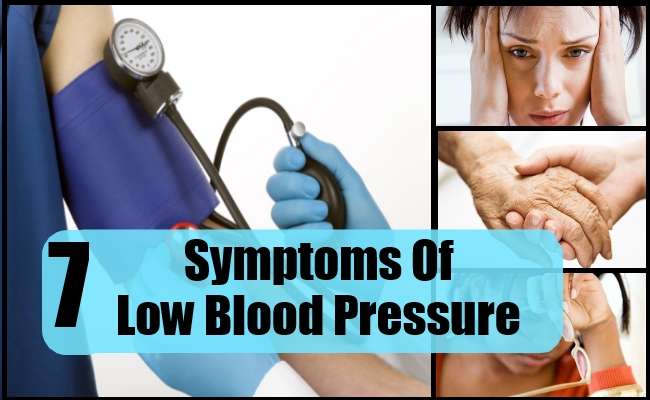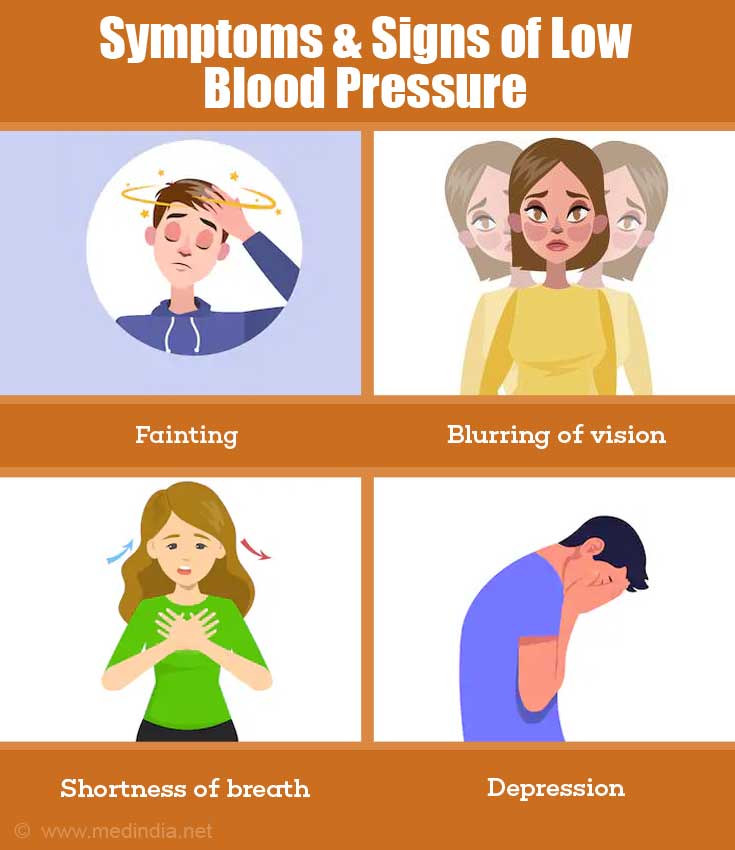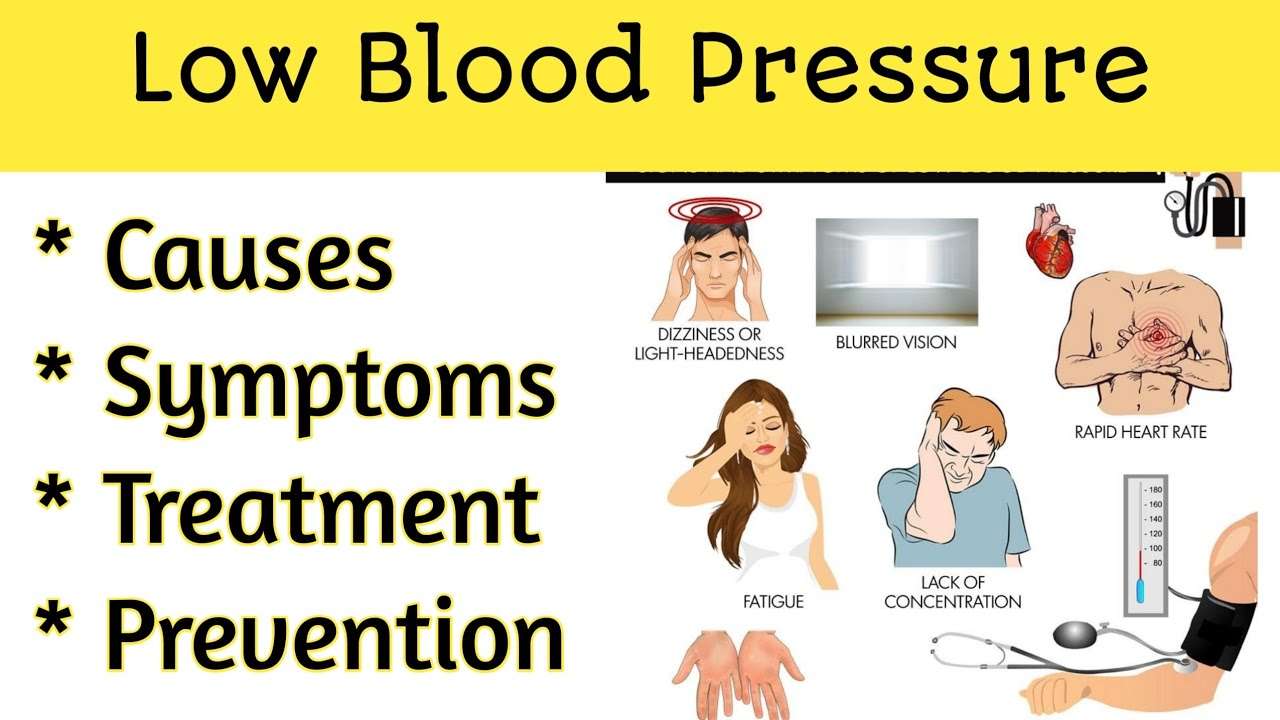How Does This Condition Affect My Body
Under normal circumstances, your body can automatically control your blood pressure and keep it from dropping too much. If it starts to drop, your body tries to compensate for that, either by speeding up your heart rate or constricting blood vessels to make them narrower. Symptoms of hypotension happen when your body cant compensate enough to offset the drop in blood pressure.
For many people, hypotension doesn’t cause any symptoms. Many people don’t even know their blood pressure is low unless they get their blood pressure measured.
For people with symptoms, the effects depend on why hypotension is happening, how fast it develops and what caused it. Slow decreases in blood pressure happen normally, so hypotension becomes more common as people get older. Fast decreases in blood pressure can mean certain parts of your body arent getting enough blood flow. That can have effects that are unpleasant, disruptive or even dangerous.
How Do I Take Care Of Myself
If you have hypotension with symptoms, the best thing you can do is follow your healthcare provider’s guidance on managing this condition. Their recommendations may include any of the following:
- Manage your diet. Following diet recommendations, especially how much salt you should have in your diet, can help avoid symptoms of hypotension.
- Take your medication. These can help you avoid the disruptive symptoms and effects of this condition.
- Dress up. Compression socks, which put light pressure on your legs and feet, can push blood upward and raise your blood pressure.
- Take it slow. Avoid standing up too quickly, especially with orthostatic hypotension. That can help you avoid the dizziness and fainting effects of hypotension.
- Have a seat. If you notice yourself feeling dizzy or lightheaded, sit down. Falling from standing height can put you at risk for severe or even catastrophic injuries from a fall, such as a broken hip, concussion, skull fracture or broken ribs.
When To See A Doctor
A person should seek medical advice if their blood pressure falls suddenly, is very low, or is significantly lower than usual.
They should also seek advice if they have other symptoms, such as excessive urination, a fever, or fatigue, as these could indicate an underlying condition.
With very low blood pressure, insufficient blood and oxygen may be reaching the brain and other vital organs. Emergency medical attention may be necessary.
If a person shows signs of anaphylaxis, whoever is with them should take immediate action. If the person carries an autoinjector, a bystander can help them administer it. They should also call 911.
Also Check: What Is The Pathophysiology Of Hypertension
Frequently Asked Questions About Low Blood Pressure
-
Isn’t it good to have low blood pressure?Isn’t it good to have low blood pressure?
As long as its not causing any problems, the lower your blood pressure, generally the better. High blood pressure is a risk to your health it can lead to serious conditions such as stroke, coronary heart disease and kidney failure. The lower your blood pressure, the less likely you are to suffer from these problems.
However, if your blood pressure becomes lower than usual for you, it can cause problems. If you have any symptoms like feeling dizzy or faint, you should contact your doctor. See the symptoms sections above for more information.
What Is Classified As Normal Blood Pressure

Normal Blood Pressure Range
Systolic pressure Diastolic pressure Pressure Range
130/85 High Normal Blood Pressure
120/80 Normal Blood Pressure
High Blood Pressure RangeIf one or both numbers are usually high, you have high blood pressure .
PLEASE ALWAYS CONSULT WITH YOUR DOCTOR PRIOR TO STARTING ANY DIET CHANGES OR EXERCISE REGIMENT MAKING SURE YOU ARE HEALTHY ENOUGH TO PARTICIPATE.
You May Like: Do Blood Clots Cause High Blood Pressure
How To Take Care Of Myself
If your healthcare provider diagnoses you with hypotension, they may do the following:
- Advise you to change your diet. Increasing your salt intake can often help increase your blood pressure.
- Teach you how to recognize and react to symptoms. A key way to help you avoid problems with hypotension is recognizing it. Your provider can help you recognize what low blood pressure feels like and how to react.
Q What Should You Eat When Experiencing Low Blood Pressure
- Drinking plenty of fluids- hydration is key, and dehydration can severely affect blood volume.
- Drink plenty of water through the day, especially after a workout session.
- Vitamin B12- lack of vitamin B12 can lead to anemia. So, you have to consume foods like eggs, cereals, and beef to avoid a dip in your blood pressure.
- Folate- folate helps keep blood pressure levels at a steady level, and foods like asparagus, liver, and garbanzo beans are rich in folate.
- Salt: Salty foods are known to increase blood pressure, and you can eat food like smoked fish, cottage cheese, canned soup, and olives.
- Caffeine: Caffeinated tea and coffee can spike your blood pressure by stimulating the cardiovascular system and giving your rate a boost.
Don’t Miss: Does Apple Cider Vinegar Lower Blood Pressure Mayo Clinic
How To Raise Low Blood Pressure
If youre dealing with hypotension, the first step is making an appointment with your doctor. After discussing your medical history, lifestyle, and other factors, your doctor may change your medication or suggest certain lifestyle changes to get to the root of the issue.
Its important not to stop taking any medications or change dosages without talking to a healthcare professional first. The same is true of dietary or other changes.
What Can I Do For Myself
There are other things you can do for yourself to help with your symptoms.
- Wear supportive elastic stockings . They put extra pressure on your legs which helps to improve circulation and raise your blood pressure. For some people this can be enough, but speak to your GP first because they arent suitable for everyone.
- Stand up slowly from sitting or lying down. You can try other simple movements to get the blood flowing before you stand up, such as straightening and bending your legs.
- Avoid standing for long periods of time.
- Drink enough water throughout the day, around 2 litres, so you dont get dehydrated.
- Eat little and often throughout the day. This avoids low blood pressure after eating.
Read more about how .
You May Like: What Is Great Blood Pressure
Pregnancy And Low Blood Pressure
Its normal for your blood pressure to become lower during pregnancy. This is mainly because your hormones relax the walls of your blood vessels. Your blood pressure may fall very early in your pregnancy and reach its lowest point during your second trimester . It then starts to rise again, returning to normal after you have your baby.
If you have low blood pressure during pregnancy, you may feel faint and dizzy suddenly when you get up from lying or sitting down. This is called postural hypotension. You can help relieve your symptoms by making sure you get up slowly from lying or sitting. And if you feel youre going to faint, sit or lie down right away.
Occasionally, symptoms of low blood pressure may be caused by other underlying health conditions affecting your pregnancy. Always tell your midwife about your symptoms. Seek medical help if you have dizziness or fainting or any other symptom that youre worried about.
Symptoms Of Low Blood Pressure
Low blood pressure is when a persons blood pressure reads lower than 90/60. More specifically, it means that the force of blood moving through the arteries is abnormally low. The medical term for low blood pressure is hypotension. The most common types of chronic or recurrent hypotensionorthostatic hypotension and neurally mediated hypotensioncause faintness, dizziness, and nausea, but they are triggered by different situations.
Severe hypotension can occur as a result of shock, a serious medical emergency. Without treatment, the effects of shock progressively get worse very fast, and can even be fatal.
Hypotension often causes similar effects, regardless of the cause.
The most common symptoms are:
- Dizziness
- Fainting or feeling faint
The timing and triggers of the symptoms can differ, depending on the type of hypotension.
- With orthostatic hypotension, you’ll likely experience symptoms soon after you stand up if youve been sitting or lying down. And theyll go away once you resume your previous sitting or lying down position for a couple of minutes. Physical exertion, standing for prolonged periods of time, and warm temperatures can worsen symptoms of orthostatic hypotension.
- If you have postprandial hypotension, you will experience the symptoms right after eating.
- With neurally mediated hypotension, the symptoms occur after standing for long periods of time.
Recommended Reading: What Is The Best Way To Lower Blood Pressure
When To Worry About Low Blood Pressure
We all know that high blood pressure can be dangerous. But what about low blood pressure
Also called hypotension, low blood pressure is not a problem if youre healthy and show no signs or symptoms of the condition. However, abnormally low blood pressure can cause problems such as dizziness and fainting and can be a sign that other serious conditions, such as heart disease, are present.
Q How Do I Know If I Have Low Blood Pressure

Read Also: Can Green Tea Lower Blood Pressure
How Is High Blood Pressure Diagnosed
To figure out your blood pressure rate, your health care provider takes blood pressure readings at different times. You need more than 1 reading because blood pressure changes depending on what you are doing and varies during the day. For example, your blood pressure can increase when you are nervous or in a hurry.
If your blood pressure is high while with your health care provider but normal otherwise, you may just be nervous. This effect is common. Even people already being treated for high blood pressure go through this.
What matters is what happens to your blood pressure outside your health care providers office. If you have high blood pressure, you should use a home blood pressure monitor. Ask your health care provider how to use the monitor correctly.
Treatment For Low Blood Pressure Depends On The Cause
If a cause can be found, a GP will be able to recommend treatment to ease your symptoms.
For example, they may suggest:
- changing medicines or altering your dose, if this is the cause
- wearing support stockings this can improve circulation and increase blood pressure
Medicine to increase blood pressure is rarely needed because simple lifestyle measures or treating the underlying cause is usually effective.
You May Like: What Blood Pressure Is Too High
Is Low Blood Pressure A Problem
For some people, low blood pressure is a sign of good health. These are generally people who are very fit and who have a slow pulse. For other people, low blood pressure is a problem.
Often, people with low blood pressure can be expected to lead longer lives.
However, people who experience continuing symptoms of low blood pressure should see a doctor. Sudden, severe low blood pressure can be associated with serious medical conditions.
What Is Low Blood Pressure
Hypotension, or low blood pressure, is when your blood pressure is much lower than expected. It can happen either as a condition on its own or as a symptom of a wide range of conditions. It may not cause symptoms, but when it does, it can require medical attention.
Hypotension has two definitions:
- Absolute hypotension: Your resting blood pressure is below 90/60 mmHg .
- Orthostatic hypotension: Your blood pressure drops within three minutes of you standing up from a sitting position. The drop must be 20 mmHg or more for your systolic pressure and 10 mmHg or more for your diastolic pressure. Another name for this is postural hypotension because it happens with changes in posture.
Measuring blood pressure involves two numbers, top and bottom, in mm/Hg.
- Systolic : Your systolic pressure is the pressure on your arteries each time your heart beats. To find your systolic pressure, a healthcare provider* inflates a cuff that squeezes your arm. At the same time, they listen to your pulse at a point below the cuff. Your systolic pressure is when they cant hear your pulse anymore because the cuffs pressure is stronger than the pressure from your heart pumping.
- Diastolic : That number is how much pressure your arteries are under between heartbeats. The provider will keep listening for your pulse to find your diastolic pressure while they deflate the cuff. Your diastolic pressure is the number where they can again hear your heartbeat as the cuff deflates.
You May Like: 190 Blood Pressure What To Do
What Are The Signs And Symptoms Of Low Blood Pressure
The symptoms of low blood pressure may include:
- light-headedness
- fainting
These symptoms can occur when doing nothing. They are more likely to occur when changing position, such as standing up or when straining on the toilet.
However, often there are no symptoms and low blood pressure is often only identified as a result of a routine medical examination or during the course of an investigation for some other condition or underling illness.
Low blood pressure may be more serious in elderly people who may have an underlying illness or who may be at risk of a fall.
Check your symptoms with healthdirects Symptom Checker to get advice on when to seek medical attention.
Symptoms To Watch Out For:
Detecting the symptoms of low blood pressure is difficult usually until it is too late. But most of the time, common signs include light headiness, dizziness, and fainting. The lowest category of hypotension is when the pressure significantly drops to a much lower level that is way below the normal range.
A systolic pressure that is below sixty coupled with a diastolic pressure of below forty is a very low blood pressure which can expose the person to various risks associated with chronic hypotension.
Dangerous low ranges have readings of 50/33 and this is common to those suffering from atherosclerosis, arteriosclerosis, kidney problems, and other related illnesses.
A sudden drop in blood pressure can be very dangerous. A sudden change of 20 systolic pressure from 130 to 110 can result in fainting and dizziness. This happens because the brain is not able to get enough supply of oxygen and other nutrients usually carried by the blood. When this happens other related ailments may occur such as stroke, hardening of arteries, and visual damage among others.
Also Check: How To Test Blood Pressure With Fingers
How Is Low Blood Pressure Diagnosed
Like high blood pressure, low blood pressure can be diagnosed easily with a .
If you feel dizzy or faint when you stand up, you might need to have your blood pressure measured when youre lying down and again while you are standing up.
You might be offered a tilt table test. This is where you lie on a table that starts in a horizontal position, then slowly tilts so that youre in an almost upright position as if you were standing. You will have your blood pressure and pulse monitored, and any symptoms you feel will be recorded. You might also have a blood test to check the levels of certain hormones.
I Changed My Diet But My Blood Pressure Is Still Too High:

Just changing your eating habits and are exercising may not correct your blood pressure readings. If you are still experiencing high blood pressure you may need to explore other high blood pressure treatments such as medication. High blood pressure treatments using medications vary. Some simply flush water and sodium from your system. Other drugs make your heartbeat slower. Still, other medications increase the openings of your blood vessels or make them relax, all of which help to decrease blood pressure.
Please always consult with your Doctor first!!!!!!
Note: High Blood Pressure Is just as important To Regulate As Low Blood Pressure
P/S: Some of the words may look like spelling errors, but are used in medical terminology.
I do have a separate post that addresses High Blood Pressure. Please make sure you check it also here at, Empower Your Lifestyle, hearing from our readers is important, and leaving your comments, suggestions, or questions in the space provided below is appreciated.
Thank you and be well.
Michael
Also Check: When To Drink Beet Juice To Lower Blood Pressure
What Causes Hypotension
Hypotension is a condition where the blood pressure is too low and the heart cant pump enough blood to maintain the body. It may be caused by problems with the heart, lungs, or veins.
Hypotension may be caused by:
- Pulmonary embolism
- Cardiac conditions
- Congenital heart defects
- Severe dehydration
- Shock
Hypotension is a medical condition that may result from low blood pressure. It can be caused by several conditions.
Check Your Blood Sugar
Diabetes and high blood sugar levels may lead to low blood pressure. Volume depletion can occur from the diuresis that follows high blood sugar levels. This is when your body tries to expel glucose via increased urination.
Consider using a home monitor to check your blood sugar levels throughout the day. See your doctor to find out the best diet, exercise, and medication plan to help balance blood sugar levels.
Don’t Miss: How Long Does It Take To Lower Your Blood Pressure